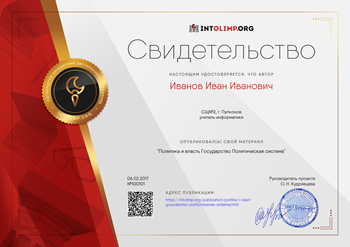Прочитайте текст. Определите, какие из приведённых утверждений 10–17 соответствуют содержанию текста (1 – True), какие не соответствуют (2 – False) и о чём в тексте не сказано, то есть на основании текста нельзя дать ни положительного, ни отрицательного ответа (3 – Not stated). В поле ответа запишите одну цифру, которая соответствует номеру правильного ответа. Big Ben London has many landmarks, but none is more popular than the Elizabeth Tower which is located at one end of the Houses of Parliament in Westminster, London. The famous tower is the third tallest clock tower in the world. It is probably the most well-known attraction in not only London, but Great Britain as well. But, what makes this tower so special? The Elizabeth Tower is home to the largest four-faced chiming bell in the world. The official name of the bell is The Great Bell. However, its nickname Big Ben is more popular than the official name. Nobody knows exactly why the bell got such a nickname. There are two main versions. The first one is that the bell was named after Sir Benjamin Hall, the British engineer who managed the casting of the bell. His name was put on the bell itself. The second version suggests that the bell was named after Ben Caunt, a famous heavyweight boxing champion of that time. Big Ben weighs 13.5 British tons, which is about the size of two large African Elephants. It is 2.2 meters high and has a diameter of 2.7 meters. Big Ben chimes every hour. The clock tower was completed in 1859 and Big Ben first chimed over London on July 11 that year. There are also four nameless quarter bells inside the tower. They chime every fifteen minutes, playing the world famous Westminster chimes. They can be heard from a distance of as far as 12 kilometres! Amazingly, the bells still chimed and the clock still showed the exact time after the Houses of Parliament were bombed during World War II. The building was completely destroyed, but the tower and the clock weren’t damaged. The clock faces are 7 metres in diameter. The hour hand is 2.7 metres long, and the minute hand is 4.3 metres long. There is an inscription in Latin in gold letters along the bottom of each of the clock faces, ‘O Lord, keep safe our Queen Victoria the First’. The clock’s time is kept accurate. There have been some incidents when the clock was inaccurate. In 1949, birds damaged the minute hand and made it slow down by 4.5 minutes. Nowadays clockmakers climb the Elizabeth Tower 3 times a week to wind Big Ben's Сlock, whose timing can be affected by the weather, atmospheric pressure or simply by its age. Big Ben’s Сlock is over 150 years old. At the top of the Elizabeth Tower there is a lantern known as the Ayrton Light, which is lit whenever the House of Commons or the House of Lords is in session. The Big Ben chimes to greet the New Year and it is a starting point for the New Year’s celebration of the entire country. The BBC also broadcasts the chiming of the bells on Remembrance Day to mark the 11th hour of the 11th day of the 11th month; the end of World War I. There are 334 steps to the top of the clock tower. Unfortunately, it is not open to the public for viewing the city. According to a survey done in 2008, Big Ben is the most popular tourist attraction in London. | 






